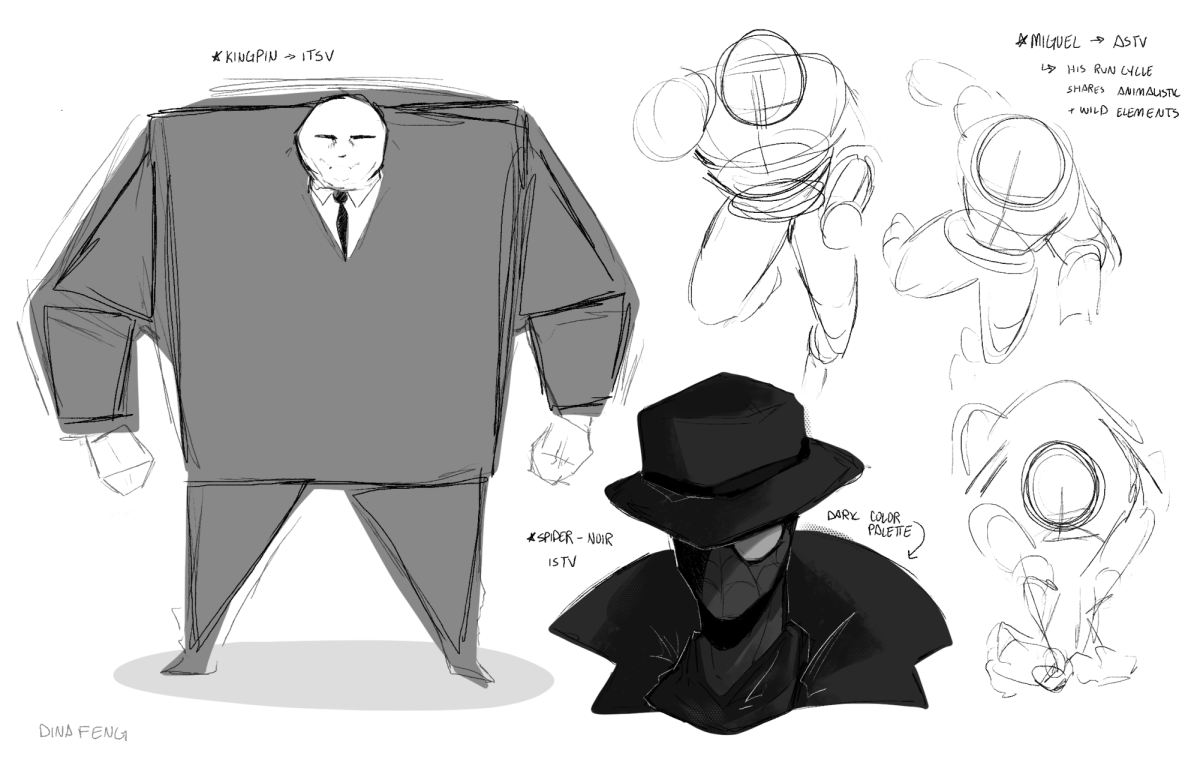Character design is the visual representation of a character’s appearance. Throughout the Spider-Verse, there are multiple examples of developing a character that has meaning through art concepts and techniques.
Where does one start? This is where the question, “What type of character do I want to create?” is asked. Do they have physical or mental disabilities? Are there specific things or events that are key to them specifically? What makes them stand out? How can I develop their character? What is their personality like? How will my character interact with their surroundings? By asking these questions, what to use to form a character is only a matter of choice and easy decision.
Shape language plays a crucial role in developing a character. For instance, curvy shapes like circles or ovals can lend a character a softer, gentler demeanor. On the contrary, incorporating harder shapes such as squares or rectangles can project a character as strong, sturdy and supportive. Additionally, triangles can evoke a sense of sharpness and danger. When exaggerated in a character, a shape’s size can further enhance their personality, making them more appealing to the audience. A way to check if a character’s design is good is to see if their silhouette is recognizable. Looking at the silhouette tests how identifiable the design is and what mood is trying to be conveyed without other details. Kingpin from “Spider-Man: Into the Spider-Verse” is an example of using shape language in character design. The villain’s design, filled with a solid color, is predominantly composed of rectangular shapes, with legs crafted in triangles. This choice of shapes, particularly the boxy arms and torso, effectively conveys a sense of strength, while the triangular legs add to his dangerous personality. The exaggerated size of his figure, coupled with his dominance on the screen, heightens the feeling of strength and instills fear in the audience, showcasing the power of shape language in character design.
Color palettes or themes are also essential when designing a character. Like shape language, color can symbolize and bring out a character’s personality. The brain associates different colors with different emotions. A character in love might have lots of red, while a sad character might have lots of blue. Other colors include green for envy, purple for fear and yellow for happiness. Saturation and hue can also determine a character’s mood. More vibrant colors exaggerate the expression or make a character seem more cheerful. On the other hand, less saturated colors can dull the mood. Pastels can soften a character, while darker colors can convey mystery. The concept of color symbolism can be found in Spider-Noir from “Spider-Man: Into the Spider-Verse.” Although it may seem only to reference the technology of 1933, the period Spider-Noir is from, there are hints of symbolism. Developed around a black-and-white color scheme, Spider-Noir evokes a sense of mystery, as black symbolizes bleakness and death, which ties into his dark background of crime and hate.
Pose and expression of characters also can enhance the overall design. Are they monotonous? Are they going to have a straight face all the time? Or maybe they’re cheerful, with a great big smile and a small, slight frown. The impact of what is trying to be conveyed can be changed by bending and exaggerating facial and body movements. Maybe a gentle character talks slowly while a rougher one moves fast. The characters’ actions can also be based on those of animals to give off the mood given by the animal. The technique of developing a character using correlation to animals is apparent in Miguel O’Hara’s character from “Spider-Man: Across the Spider-Verse.” Because of the lack of actual “Spider-Man” in him, he has claws to climb walls. His stance when doing so is similar to the pose of a prowling predator. The connection between his pose and that of an apex predator makes the audience feel more fear as if they were Miguel’s prey. It develops a feeling of dominance and strength in Miguel.
Have fun designing the character. Experiment! Bend and shape them to your liking. As an artist, you have free will!
by DINA FENG






